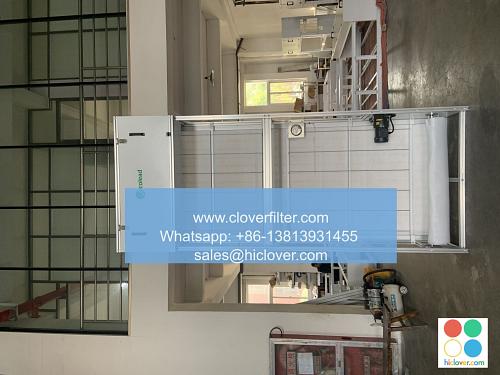Air Purifiers in the 21st Century: Are they worth the Environmental Cost?

Air Purifiers in the 21st Century: Are they worth the Environmental Cost?
Introduction
In today’s world, air pollution is a major concern for both human health and the environment. With the rapid industrialization and urbanization, our air quality has been compromised to a great extent. In such a scenario, air purifiers have emerged as a savior for many, providing clean and fresh air to breathe. But, are air purifiers worth the environmental cost? In this article, we will delve into the benefits and drawbacks of air purifiers, exploring the Importance of Air Purifiers, Types of Air Purifiers, Benefits, Drawbacks, and Alternatives to help you make an informed decision.
Importance of Air Purifiers
Air purifiers are essential in today’s world, especially for people who suffer from respiratory issues, allergies, or asthma. They work by removing pollutants, allergens, and germs from the air, supplying clean and fresh air for respiration. Air purifiers are particularly crucial in Indoor spaces such as homes, offices, and cars, where airborne pollutants can accumulate quickly.
Types of Air Purifiers
There are various types of air purifiers available in the market, each with its unique features and benefits:
- HEPA (High Efficiency Particulate Air) purifiers: These are the most popular type, capable of capturing 99.97% of particles as small as 0.3 microns, including dust, pollen, and smoke.
- Activated Carbon purifiers: These work effectively against gases, odors, and volatile organic compounds (VOCs).
- UV (Ultraviolet) purifiers: These use ultraviolet light to kill bacteria, viruses, and other microorganisms.
- Ion purifiers: These release negative ions to attract and trap pollutants, creating a clean and fresh environment.
Benefits of Air Purifiers
Air purifiers offer numerous benefits, including:
- Improved indoor air quality: Air purifiers remove pollutants, allergens, and germs, making indoor air cleaner and healthier.
- Relief from allergies and asthma: By removing allergens and irritants, air purifiers can alleviate symptoms and improve respiratory health.
- Reduced respiratory issues: By removing pollutants, air purifiers can help reduce respiratory problems, such as COPD, bronchitis, and bronchial asthma.
- Longer air filter replacement: Some air purifiers come with washable filters, reducing waste and saving resources.
- Increased productivity: A cleaner and healthier indoor environment can boost mental focus and concentration, leading to increased productivity.
Drawbacks of Air Purifiers
While air purifiers are beneficial, there are some drawbacks to consider:
- Energy consumption: Air purifiers can consume energy, which may increase your utility bills.
- Noise: Some air purifiers can be noisy, disrupting nighttime sleep or conversation.
- Maintenance: Air purifiers require regular filter replacements, which can be expensive and generate waste.
- Limited capabilities: Air purifiers may not remove all pollutants, such as VOCs or particles smaller than 0.3 microns.
Alternatives to Air Purifiers
If you’re concerned about the environmental cost of air purifiers, consider these alternatives:
- Open windows: Natural ventilation can be a cost-effective and eco-friendly way to improve indoor air quality.
- Houseplants: Certain plants, like peace lilies and spider plants, are known to purify the air and produce oxygen.
- Energy-efficient HVAC systems: Upgrade to energy-efficient HVAC systems to reduce energy consumption and improve indoor air quality.
Conclusion
Air purifiers have revolutionized the way we breathe, providing cleaner and healthier air. While they are not perfect, and there are alternatives, the benefits of air purifiers far outweigh the drawbacks. With the growing concerns about environmental sustainability, it’s essential to weigh the pros and cons and consider eco-friendly options, such as energy-efficient HVAC systems and houseplants. By making an informed decision, you can enjoy a cleaner and healthier indoor environment while minimizing your environmental impact.
Key Takeaways:
- Air purifiers are essential for improving indoor air quality and alleviating respiratory issues.
- There are various types of air purifiers, each with its own strengths and weaknesses.
- Air purifiers have both benefits (improved health, productivity, and longer filter replacement) and drawbacks (energy consumption, noise, maintenance, and limited capabilities).
- Alternatives to air purifiers include natural ventilation, houseplants, and energy-efficient HVAC systems.
By understanding the importance, types, benefits, drawbacks, and alternatives of air purifiers, you can make an informed decision about which option best suits your needs.
It looks like you’re ready to start a conversation! What’s on your mind, and how can I help?


